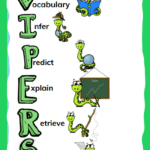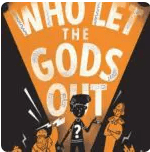Synopsis of Reading and Phonics
Phonics
The primary approach to teaching pupils to read at Newtown Linford Primary school is through the systematic teaching of synthetic phonics. This means that phonics is explicit, organised, sequenced and covers all of the grapheme-phoneme correspondences in the English Language. At Newtown we follow the ‘Little Wandle Letters and Sounds Revised’ five-phase programme; this is a structured programme which introduces pupils to phonemes and graphemes in a specific order within the context of a language-rich curriculum. By following the ‘Little Wandle Letters and Sounds Revised’ programme effectively, pupils are able to see the relationship between reading and spelling from an early stage, such that the teaching of one reinforces understanding of the other.
During phonics lessons, the children are in grouped by ability. This enables the children to receive teaching which is tailored to their level. Furthermore, the children are regularly assessed and are phonics screened on a half termly basis. This allows any children which have fallen off trajectory to receive daily keep-up sessions
To support the children outside of their phonics lessons, we provide the children with a rich reading environment. It is our belief that children should be engaged in the exploration of exciting and stimulating contexts for reading words with purposes for learning. Within class and around school, the children are surrounded by a love for reading and will regularly be exposed to whole class and independent reading.
Although by the end of Year 1 the teaching of phonics should be substantially complete, the teaching of word structures and spelling patterns continue to be learnt in Year 2 and this is further secured by the teaching and learning of spelling in Key Stage 2.
How often do we teach phonics?
To ensure that the children have as much exposure to reading as possible, phonics is taught daily. Those that require additional support receive further interventions in the afternoon. We ensure that these lessons are sequenced, fast paced and engaging, through the use of different fun, practical and hands on activities.
What is the structure of a phonics session at Newtown Linford Primary School?
Revisit
This is the most crucial stage in the phonics session that keeps the children revisiting sounds that they have previously covered. We will revisit previously taught phonemes and graphemes, words that the children have previously read and we will also revisit tricky words which they need to be able to read and spell in their writing.
Teach and practise
This is where the new phoneme and grapheme is introduced. The children will practise pronouncing the phoneme, recognising the grapheme and sounding and blending words with the new phoneme.
The children will practise reading words with the new grapheme in. We read these words a few times to achieve fluency.
A new tricky word may also be introduced. The children will look at what makes the word trick
Practise and Apply
The children will read a sentence containing the new grapheme and some tricky words. We practise reading the words with the digraphs and trigraphs in first before we read the whole sentence.
Finally, we write some words/ sentences using our new grapheme. The children use their segmenting fingers to count the sounds in the words.
Parent Support
The resources on this page will help you support your child with saying their sounds and writing their letters. There are also some useful videos so you can see how they are taught at school and feel confident about supporting their reading at home.
Information about phonics Early Reading
https://www.littlewandlelettersandsounds.org.uk/resources/for-parents/
Follow this link for phonics videos that your child can participate in at home:
https://www.youtube.com/channel/UCP_FbjYUP_UtldV2K_-niWw/playlists
https://bepschools.org/wp-content/uploads/sites/8/2021/12/BEP-Curriculum-Statement-Nov-2021.pdf








